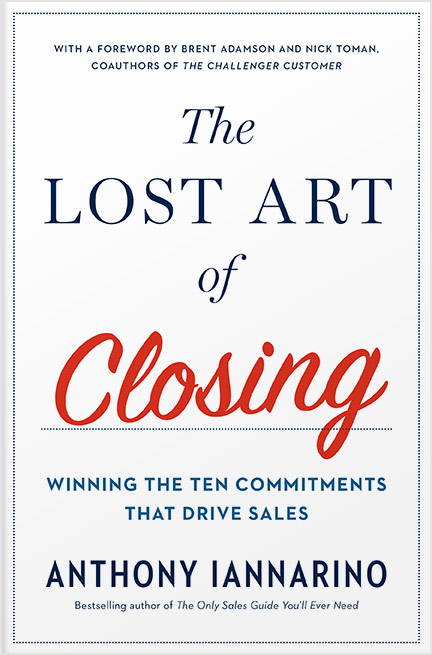If there is one thing I see salespeople do that harms their results, it is believing they can sell over email. Because they can’t secure a meeting, they accept a conversation on the phone and an emailed proposal and pricing as their sales process (something I am calling the new one-call close). This is to do the opposite of what a domination strategy requires of you.
If you can’t sell the value of a meeting, then you can’t sell the value of the process. If you can’t sell the process, you will struggle mightily to sell your solution. Rather than adapting your sales process to something that doesn’t serve you, you are better off learning to trade enough value for a meeting, increasing your conviction, and making a better argument for a face-to-face meeting.
Trading Value
In The Lost Art of Closing: Winning the 10 Commitments That Drive Sales , I wrote about two rules for salespeople: 1) Trading value for every commitment you ask for, and 2) Controlling the process.No more pushy sales tactics. The Lost Art of Closing shows you how to proactively lead your customer and close your sales. 
The single reason your prospects or dream clients reject your request for a meeting is that they don’t think your offer justifies their time. If you want to make it easier to obtain a meeting, increase the value you offer in trade for that meeting.
In Eat Their Lunch: Winning Customers Away From Your Competition, I included a framework in the first third of the book on developing an executive briefing that is worth your dream client’s time and how to use the tool for capturing mindshare, compelling change—and scheduling a meeting. You will do better when your value is captured even if there is no nest step (that’s one way you know its real value). Win customers away from your competition. Check out Eat Their Lunch
It’s foolish to believe you can win big deals without your dream client agreeing to a meeting. However, trading value may not be enough to get you an appointment, so before talking about controlling the process, we have to cover another change that will improve your ability to acquire a meeting.
Conviction
If you don’t believe what you are saying, neither will your dream client. If you are not willing to push for a meeting, you are not going to obtain the meetings you need. If you don’t believe you will create value for your dream client in a meeting, your doubt will become their doubt.
You have to be willing ask again, and you have to promise your dream client you will not waste one minute of their time, the heart of every objection you will ever hear when you are asking for a first meeting.
This newsletter isn’t about belief in your company, even though that’s necessary. It also isn’t about your confidence in your product or solution. It’s about your confidence in yourself, your belief that you alone can create enough value to deserve the meeting.
Controlling the Process
Your prospect may not want to have the meeting necessary for real change, the meetings required to move from their current state to a better future state. If you can’t sell a meeting, you can’t sell the process. This is true because the process is a series of meetings.
Salespeople (and sales leaders) are being sold on the idea that automation and technological tools will improve their results. Most of the tools start with a premise that suggests friction-free, time-shifting technologies are the right medium for sales conversations. They assume deals can be sold and won without face-to-face meetings and phone calls. Not every company should run their sales organization as an SAAS company, nor should every company have the same sales stack.
Controlling the process requires you to talk to your prospective client about the real next steps necessary for producing the results they want and need. You have to ask for these meetings and to do that you need to be a combative diplomat. The combative part means persistently and energetically arguing to do what’s right, not what’s easy. The diplomat part means having that conversation in a way that doesn’t increase the resistance on your dream client’s part and instead, reducing it to the point you gain agreement to the next meeting.
- If your dream client isn’t going to meet with you, why would you believe they are going to buy from you?
- If your dream client won’t commit to going through the process you know is necessary, what makes you believe they are going to sign a contract and start sending you checks?








.jpg?width=768&height=994&name=salescall-planner-ebook-v3-1-cover%20(1).jpg)


